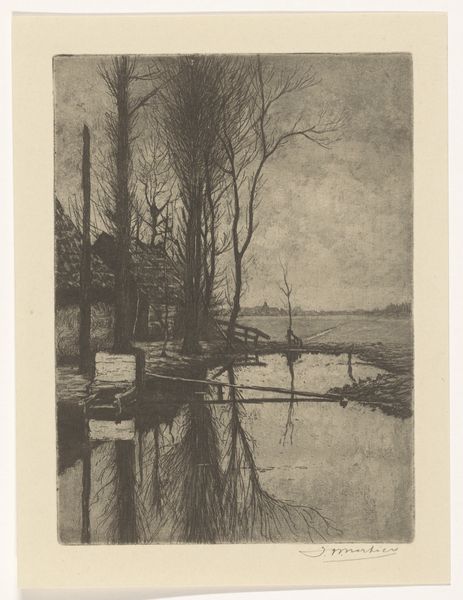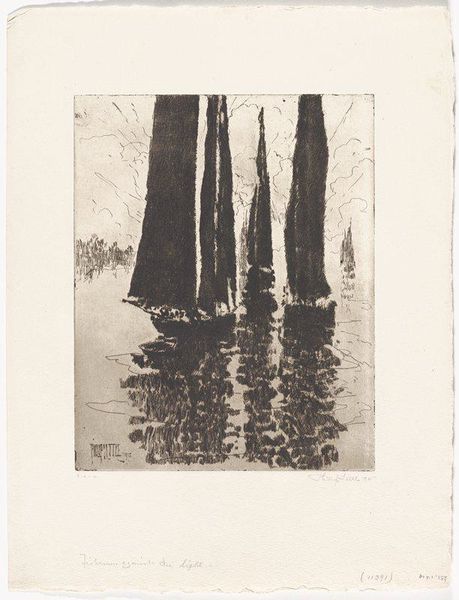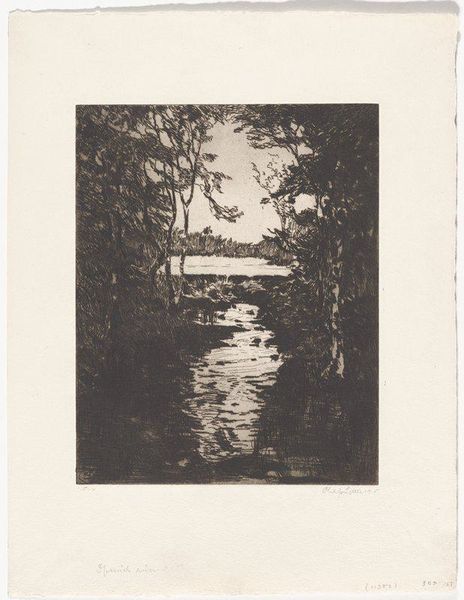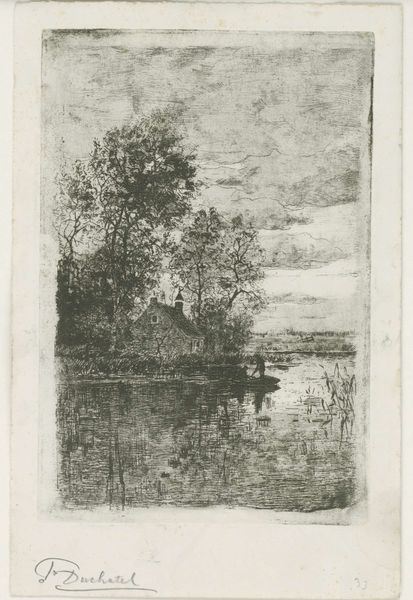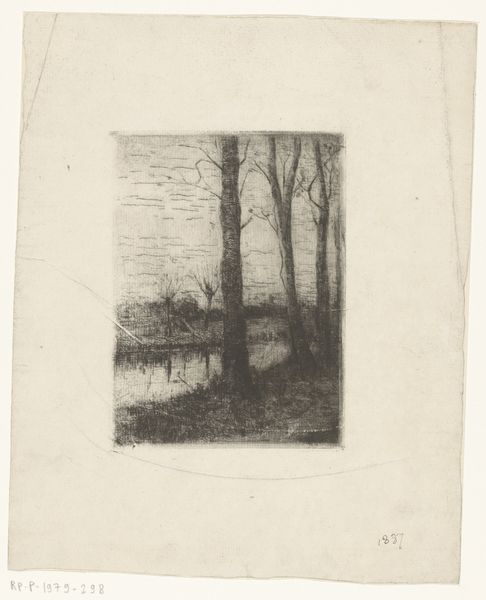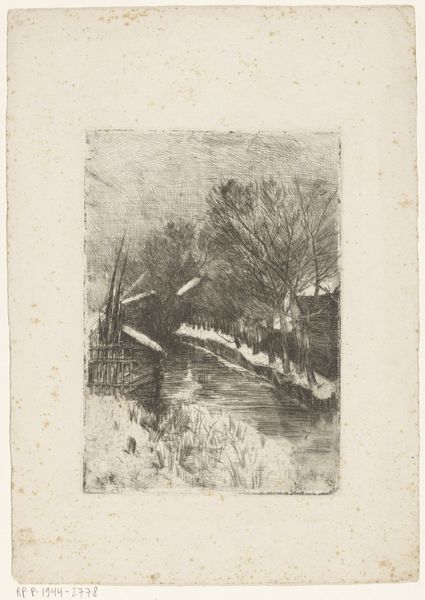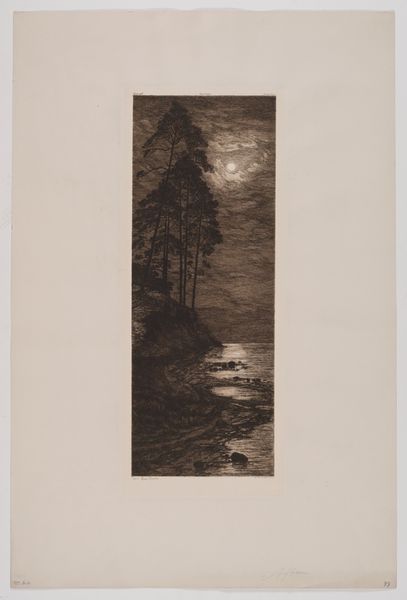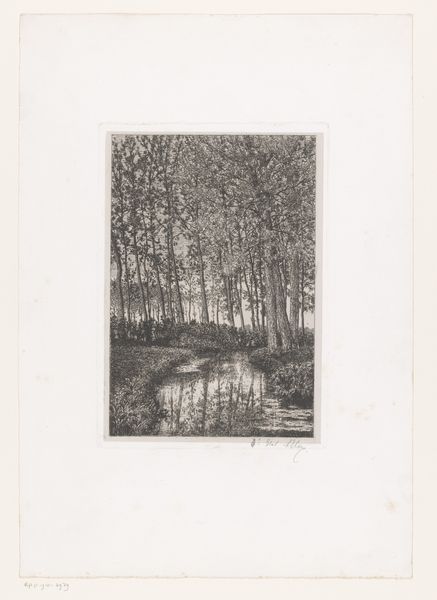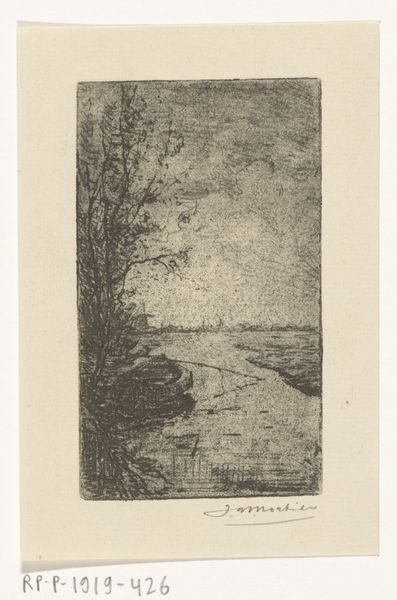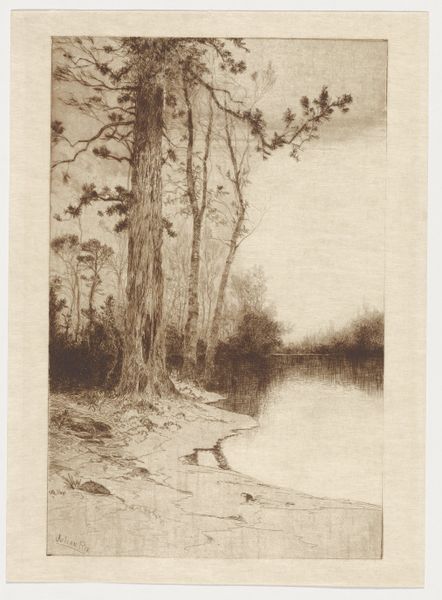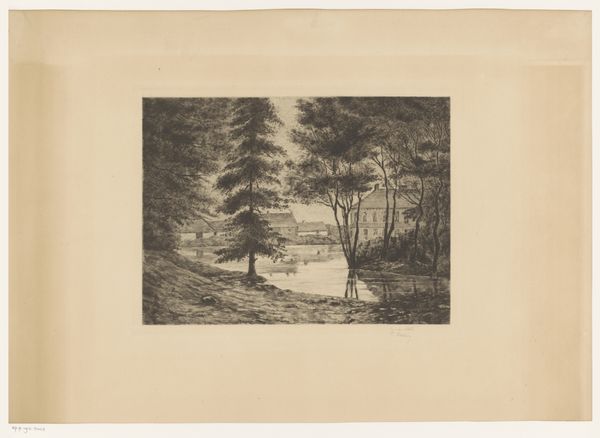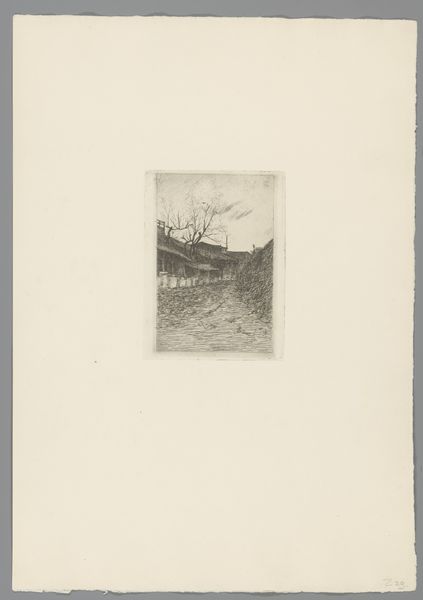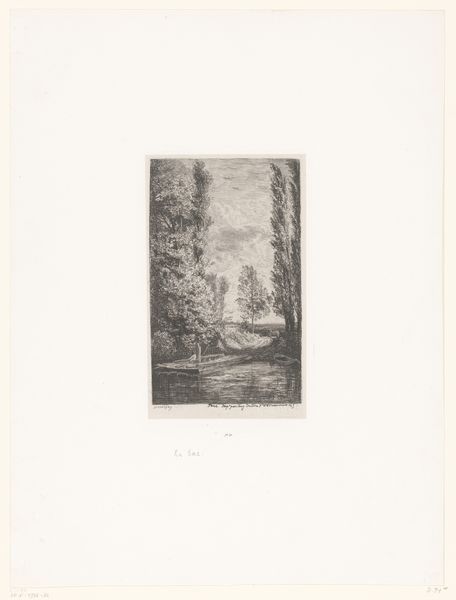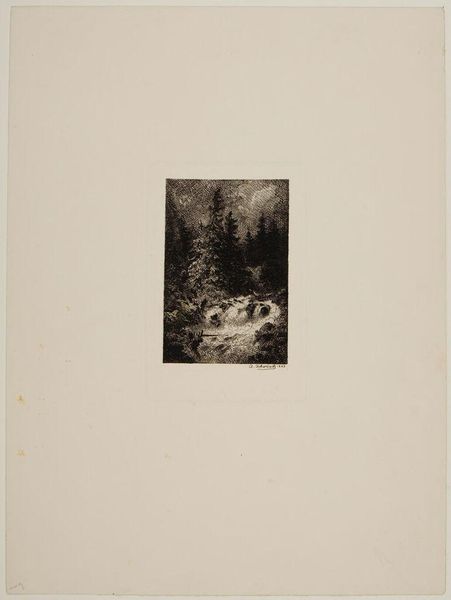
Dimensions: 9 7/8 x 7 7/8 in. (25.08 x 20 cm) (plate)15 1/8 x 11 3/4 in. (38.42 x 29.85 cm) (sheet)
Copyright: No Copyright - United States
Curator: Standing before us is Philip Little’s 1915 etching, "The Salt Ship - Gloucester," now residing here at the Minneapolis Institute of Art. The piece, primarily in ink on paper, offers an intriguing glimpse into the coastal life of Gloucester, Massachusetts, during the early 20th century. Editor: The composition immediately strikes me; it’s incredibly moody. The heavy blacks and the stark whites create a dramatic interplay, evoking a sense of both tranquility and perhaps even isolation in the maritime scene. The artist created strong formal tensions. Curator: Indeed. The deep, rich blacks achieved through the etching process really anchor the image. Observe how Little uses the vertical lines of the ship masts and building to create structure. It allows for our eyes to then investigate all of these minute compositional elements within this contained pictorial space. How does the piece strike you? Editor: Well, as you mention those etched lines, the materials used are clearly very important. I can imagine Little carefully working the metal plate, controlling the acid’s bite to get those intense dark areas, while the untouched parts yield a certain luminosity. This interplay, the sheer physicality of its creation, is crucial to understanding the print's evocative qualities. You feel that labor. It reminds one that these weren’t simply idyllic scenes but images resulting from working lives that relied heavily upon salt. The materials here and methods give voice to a labor narrative and how this informed artistic style. Curator: That’s a compelling point, considering Gloucester's historical reliance on the salt trade. Focusing on the pictorial space, there is a semiotic reading, the composition seems to balance realism with an evocative style, reminiscent of Impressionism. It's as if Little sought to capture not just the image, but also the feeling of the port. Editor: Absolutely. It speaks to a certain romanticization of labor, viewing it, in the art world, as picturesque material in the landscape rather than a brutal and arduous process tied into exploitative economies. Curator: In closing, Little's "The Salt Ship" really showcases how an artist can imbue an ostensibly simple scene with rich textural details and multiple readings and meanings. Editor: A scene, crafted from a deep investment of materials, can provide insights into both social narratives and its rich compositional structure.
Comments
No comments
Be the first to comment and join the conversation on the ultimate creative platform.
